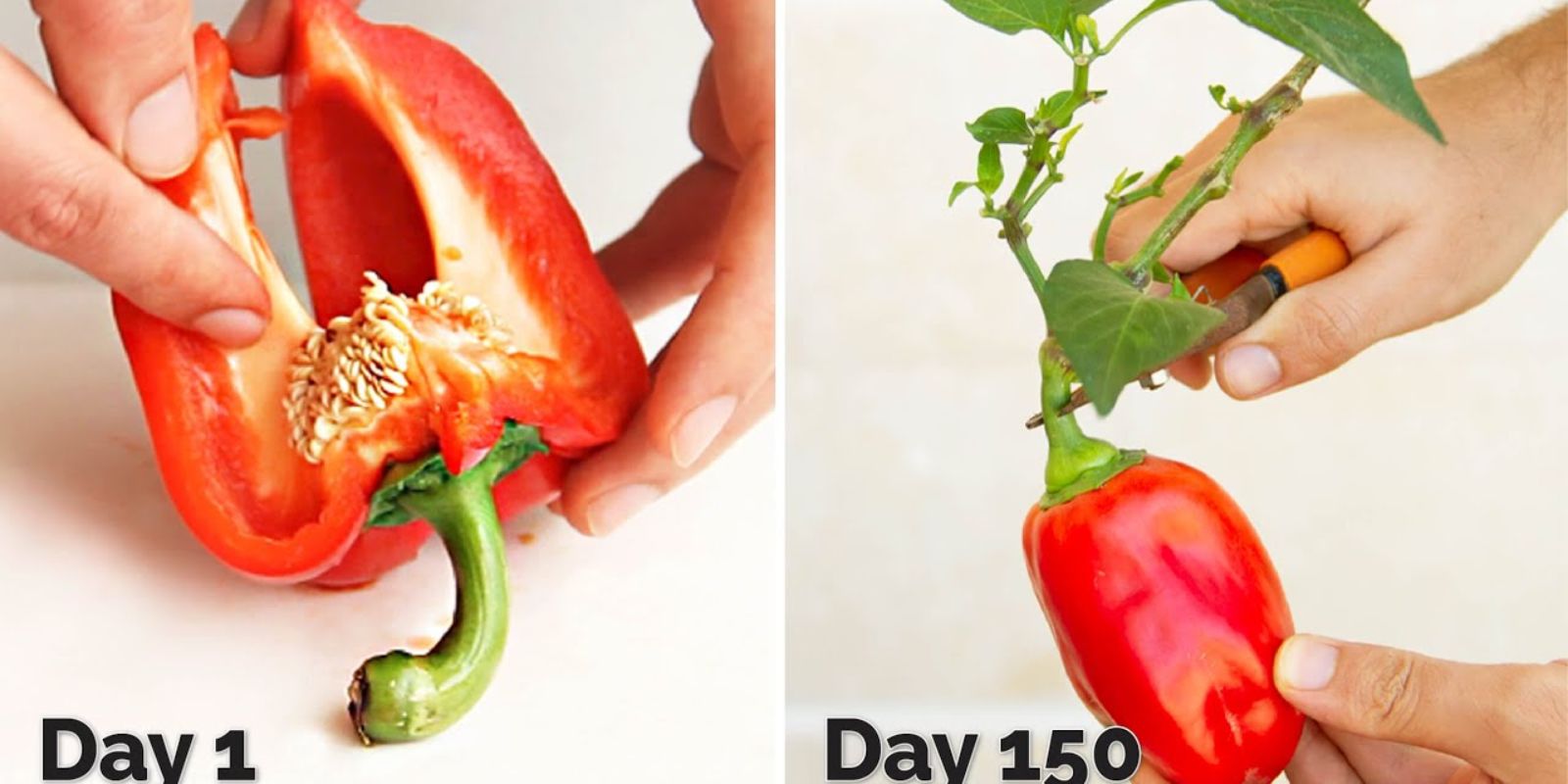Growing peppers in your home garden can be an incredibly rewarding endeavor. Not only do peppers add vibrant colors and bold flavors to your dishes, but they also offer numerous health benefits. With the right techniques and a bit of patience, you can enjoy a plentiful harvest of peppers throughout the growing season. This comprehensive guide will walk you through the steps needed to grow peppers successfully in your garden, from selecting the right variety to harvesting your peppers.
Understanding Peppers and Their Growing Needs
Peppers (Capsicum annuum) are versatile plants that come in various shapes, sizes, and flavors, ranging from sweet bell peppers to fiery hot varieties. They are native to tropical and subtropical regions, meaning they thrive in warm temperatures and require a bit of attention to detail for optimal growth.
Key Growing Conditions for Peppers:
- Warm Temperatures: Peppers need a consistent temperature between 70°F and 85°F (21°C to 29°C) for optimal growth.
- Full Sunlight: They require at least 6-8 hours of direct sunlight per day.
- Well-Drained Soil: Peppers prefer loamy, well-drained soil with a pH of 6.0 to 6.8.
Step 1: Choose the Right Pepper Variety
Selecting the appropriate pepper variety for your garden is crucial for a successful harvest. There are many types of peppers, each with specific characteristics and growing requirements.
Popular Pepper Varieties:
- Bell Peppers: Sweet and mild, available in various colors like green, red, yellow, and orange.
- Jalapeños: Medium heat peppers used in many cuisines.
- Habaneros: Extremely hot peppers, perfect for adding intense heat to dishes.
- Poblanos: Mildly hot peppers often used in Mexican cuisine.
Considerations When Choosing a Variety:
- Climate: Choose varieties suited to your climate. For cooler regions, select early-maturing varieties.
- Space: Determine how much space you have. Some peppers grow taller and bushier, while others are more compact.
Step 2: Start Seeds Indoors
Starting pepper seeds indoors gives your plants a head start, especially if you live in an area with a short growing season.
Steps for Starting Seeds Indoors:
- Timing: Start seeds 8-10 weeks before the last expected frost date. This allows the seedlings to be strong enough when transplanted outdoors.
- Seedling Trays: Use seed trays or small pots filled with seed-starting mix. Ensure good drainage.
- Planting Seeds: Plant seeds about 1/4 inch deep and cover lightly with soil. Keep the soil moist but not waterlogged.
- Temperature and Light: Maintain a temperature of 70°F to 80°F (21°C to 27°C) and provide 12-16 hours of light daily using grow lights or by placing trays near a sunny window.
Step 3: Transplant Seedlings Outdoors
Once the danger of frost has passed and the soil temperature is consistently above 60°F (15°C), it’s time to transplant your seedlings.
Steps for Transplanting:
- Harden Off Seedlings: Gradually acclimate seedlings to outdoor conditions by placing them outside for a few hours each day, increasing the time over a week.
- Prepare the Garden Bed: Choose a sunny location with well-drained soil. Amend the soil with compost to improve fertility and drainage.
- Planting: Space plants 18-24 inches apart in rows, ensuring each plant has enough room to grow. Plant seedlings at the same depth they were in their pots.
- Watering: Water thoroughly after planting and keep the soil consistently moist, but not soggy.
Step 4: Provide Adequate Care
Proper care is essential for healthy pepper plants and a successful harvest.
Watering and Feeding:
- Watering: Peppers need regular watering to keep the soil moist. Aim to water deeply once a week or more frequently during hot, dry spells.
- Fertilizing: Use a balanced fertilizer (e.g., 10-10-10) to provide essential nutrients. Fertilize every 4-6 weeks during the growing season.
Supporting Plants:
- Staking: Use stakes or cages to support pepper plants, especially when they begin to bear fruit. This prevents the plants from bending or breaking under the weight of the peppers.
Pruning and Maintenance:
- Pruning: Prune pepper plants to remove any dead or diseased foliage and to encourage bushier growth.
- Weeding: Keep the garden bed free of weeds that compete for nutrients and water.
Step 5: Monitor for Pests and Diseases
Peppers are relatively hardy, but they can be susceptible to certain pests and diseases.
Common Pests:
- Aphids: Small insects that can damage leaves and stunt plant growth. Control them with insecticidal soap or neem oil.
- Spider Mites: Tiny pests that cause stippling and webbing. Increase humidity around plants and use miticides if needed.
Common Diseases:
- Blight: Fungal diseases that cause leaf spots and wilt. Improve air circulation and avoid overhead watering.
- Powdery Mildew: A fungal disease that causes white powdery spots on leaves. Use fungicides and remove affected plant parts.
Step 6: Harvesting Peppers
Knowing when and how to harvest your peppers ensures the best flavor and quality.
Harvesting Tips:
- Color and Size: Most peppers change color as they mature. Harvest them when they reach the desired size and color. For example, bell peppers are often picked green but can be left on the plant to ripen to red, yellow, or orange.
- Cutting Peppers: Use scissors or pruning shears to cut peppers from the plant, leaving a small stem attached. Avoid pulling peppers off the plant to prevent damage.
Conclusion
Growing peppers in your home garden is a fulfilling experience that yields delicious and colorful produce. By choosing the right variety, starting seeds indoors, providing proper care, and monitoring for pests and diseases, you can ensure a successful pepper harvest. Whether you’re growing sweet bell peppers, spicy jalapeños, or fiery habaneros, the satisfaction of enjoying home-grown peppers is well worth the effort.
Ready to start your pepper-growing adventure? Follow these steps to create a thriving pepper garden and share your progress with fellow gardeners using #GrowPeppers #HomeGarden #PepperHarvest #GardenFresh. Embrace the joy of home gardening and savor the flavors of your own pepper paradise!

